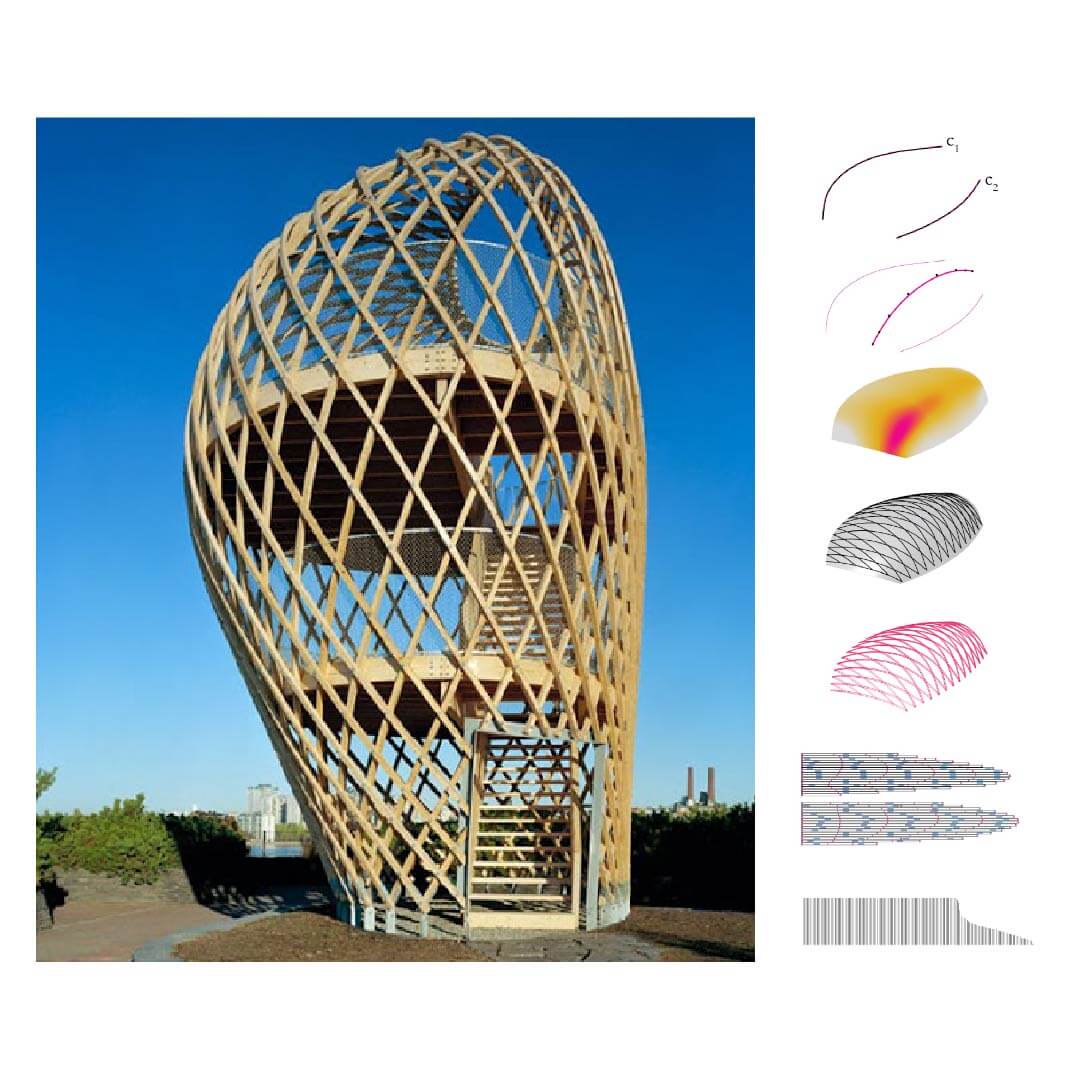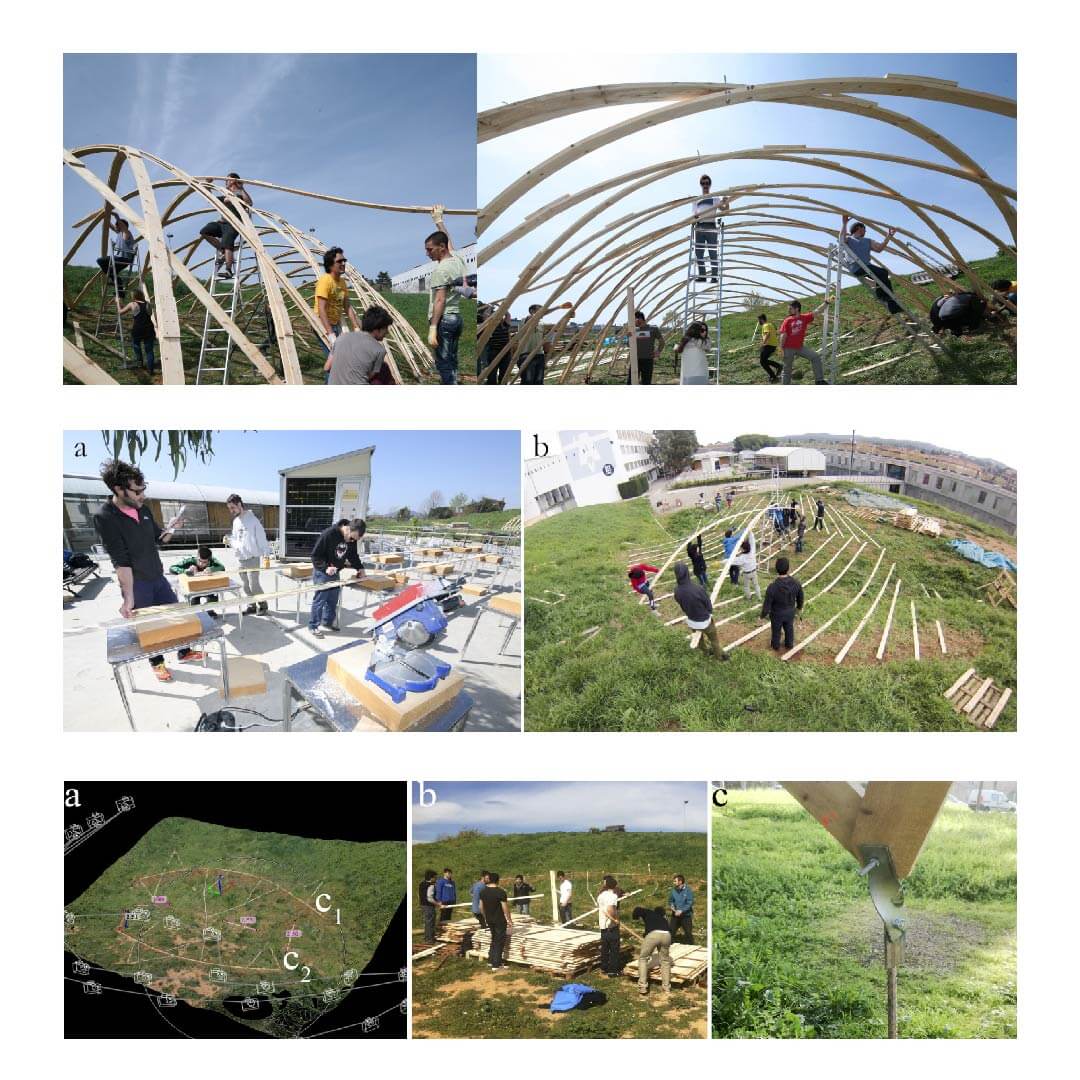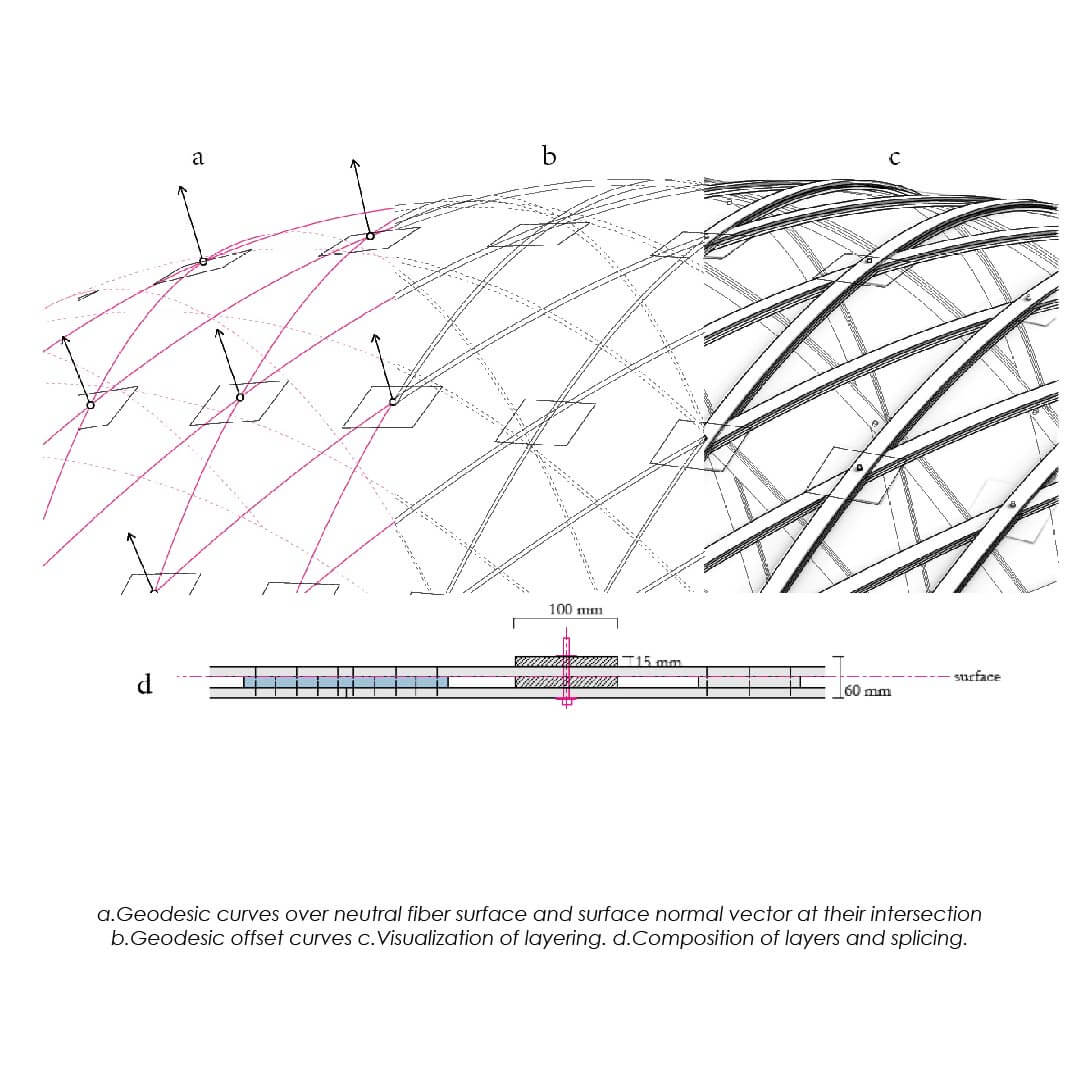Geodesic Gridshell
Low-Tech Geodesic Gridshell: Almond Pavilion
Enrique Soriano
Barcelona Tech, UPC
Traditional timber gridshells are extremely efficient but the required calculation experience and erection complexity make them neither appealing for the industry nor accessible.
This paper shows the research in progress conducted on the universalization of alternative irregular gridshells based on geodesic patterns.
 The paper defines geodesic gridshells and discusses their suitability for scarce budgets and low-tech manufacturing of free-form shells.
The paper defines geodesic gridshells and discusses their suitability for scarce budgets and low-tech manufacturing of free-form shells.
We introduce the research motivation, the historical framework, the geometrical properties of geodesic curves, and their structural corresponding advantages.
 We expose then our geodesic pattern design method on a free-form surface, obtaining a simple layout for the manufacturing of a multilayered gridshell.
We expose then our geodesic pattern design method on a free-form surface, obtaining a simple layout for the manufacturing of a multilayered gridshell.
Finally, we discuss the benefits and challenges based on the experience from testing the concept with a built low-tech elastically-bent green timber gridshell.
 Shells are structures defined by a curved surface and often a doubly curved surface and by being very thin in the perpendicular direction to the surface (Naicu et al., 2014).
Shells are structures defined by a curved surface and often a doubly curved surface and by being very thin in the perpendicular direction to the surface (Naicu et al., 2014).
Shells use the minimum amount of material to carry imposed loads using primarily membrane action, gaining strength through form rather than mass (Chilton and Tang, 2017).
 Nevertheless, it has the problematic of curved and often bespoke manufacturing. In this sense, gridshells defined as structures “with the shape and strength of a double-curvature shell, but made of a grid instead of a solid surface” (Douthe et al., 2006) are a solution by concentrating the structure into its strips (Johnson, 2017).
Nevertheless, it has the problematic of curved and often bespoke manufacturing. In this sense, gridshells defined as structures “with the shape and strength of a double-curvature shell, but made of a grid instead of a solid surface” (Douthe et al., 2006) are a solution by concentrating the structure into its strips (Johnson, 2017).
 These strips or laths can describe the gridshells in two groups (Naicuet al., 2014): from node to node or with long elements spanning across the structure, defined as continuous grid members.
These strips or laths can describe the gridshells in two groups (Naicuet al., 2014): from node to node or with long elements spanning across the structure, defined as continuous grid members.
The traditional elastic gridshells are included in this latter group of long continuous beams, and ground its form in the elastic deformation of a flat deployable regular grid mat.
 Despite its benefits (large spans at small material, transport and assembly cost), elastic gridshells have been undermined by the cost and complexity of their erection method from its inception in the late 1960’s (Quinn et al.,2014).
Despite its benefits (large spans at small material, transport and assembly cost), elastic gridshells have been undermined by the cost and complexity of their erection method from its inception in the late 1960’s (Quinn et al.,2014).
 Alternatively to elastic gridshells, ribbed gridshells arouse by the same period under the lead of Julius Natterer as a “rational development of the original Frei Otto foldable lattice shell” (Chilton and Tang, 2017).
Alternatively to elastic gridshells, ribbed gridshells arouse by the same period under the lead of Julius Natterer as a “rational development of the original Frei Otto foldable lattice shell” (Chilton and Tang, 2017).
 Both elastic gridshells and ribbed gridshells ground their manufacturing in the principles of active bending in a geometric based approach (Lienhard et al., 2013), by exploiting the material properties and the cost-efficiency of obtaining form by means of elastic deformation, with the difference that the ribbed gridshell “was constructed directly onto the final profile on temporary supports rather than being assembled flat and coaxed into the double-curved form” (Chilton and Tang, 2017).
Both elastic gridshells and ribbed gridshells ground their manufacturing in the principles of active bending in a geometric based approach (Lienhard et al., 2013), by exploiting the material properties and the cost-efficiency of obtaining form by means of elastic deformation, with the difference that the ribbed gridshell “was constructed directly onto the final profile on temporary supports rather than being assembled flat and coaxed into the double-curved form” (Chilton and Tang, 2017).
 But above all, ribbed gridshells were different in the “use of thinner and wider boards” for the laths, “more easily bent to a curved profile and less likely to break during bending” (Chilton and Tang, 2017).
But above all, ribbed gridshells were different in the “use of thinner and wider boards” for the laths, “more easily bent to a curved profile and less likely to break during bending” (Chilton and Tang, 2017).
In order to reduce unfavorable stresses, the geometry of laths is restricted to follow geodesic curves in a surface in order to simply twist and bend along the weak axis.




























Comments